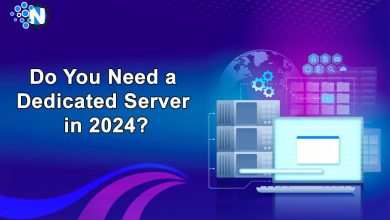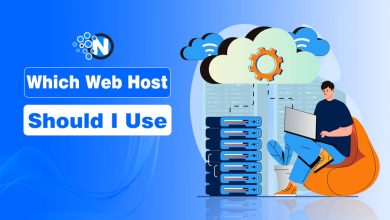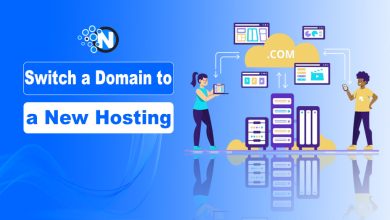The streaming industry has experienced explosive growth over the past few years. Video content now makes up over 80% of all internet traffic. The video streaming market is worth more than $670 billion and is estimated to grow to over $2.49 trillion by 2032
Your viewers want instant playback and clear video. If they see buffering, they’ll leave in seconds for a better option available. This makes your server choice critical for streaming success.
Whether you’re a content creator, a game streamer, or running a media business, the right infrastructure can be the difference between loyal audiences and lost opportunities.
In this blog post, I will explain why dedicated servers are essential for streaming success and how they improve user experience.
Let’s start!
Why Regular Hosting Fails for Streaming
Shared hosting works fine for basic websites. However, streaming requires significantly more power and bandwidth. When you share resources with other users, their traffic can slow down your streams.
Virtual private servers help, but they still share the underlying hardware. During peak times, performance drops. Your viewers notice the difference and bounce away for a better option out there. This is the reason, streaming companies should be using dedicated servers for seamless services and a great user experience.
What Is a Dedicated Server?
A dedicated server is a physical machine that belongs only to you. You get all the CPU cores, RAM, storage, and network ports. No sharing means no performance issues.
Think of it like renting an entire building instead of sharing an apartment. You control everything and don’t worry about noisy neighbors affecting your work.

Five Problems Only Dedicated Servers Solve
1. Guaranteed Bandwidth
Dedicated servers give you private network connections from 1 Gbps to 100 Gbps. This bandwidth belongs only to you. Even when thousands of viewers join your stream, performance stays steady.
Shared hosting can’t promise this. Your bandwidth gets split among all users on the server.
2. Low Latency for Live Streams
Dedicated servers cut out the virtualization layer. Your data takes a shorter path to viewers. This matters for live chat, interactive streams, and real-time engagement.
Every millisecond counts when you’re streaming live events or gaming content.
3. Custom Hardware Setup
You can add whatever hardware your streams need:
- NVIDIA GPUs for real-time video encoding
- NVMe SSDs for fast video file access
- Extra RAM for multiple simultaneous streams
- Custom network cards for better connectivity
Try doing that with shared hosting.
4. Better Security and Compliance
Your content stays isolated on dedicated hardware. This makes it easier to meet requirements like:
- DRM (Digital Rights Management)
- Regional data laws
- SOC 2 compliance
- GDPR privacy rules
Shared servers mix your data with other users. This creates security risks you can’t control.
5. Predictable Costs
Dedicated servers cost more upfront. But once you grow past a certain size, they’re cheaper than paying per-gigabyte fees.
You know exactly what you’ll pay each month. No surprise bills when your stream goes viral.
Choosing the Right Bandwidth
1 Gbps
Good for:
- Single HD streams
- Under 5,000 viewers
- Testing your streaming setup
- Regional audiences
10 Gbps
Works for:
- Multiple 1080p channels
- Single 4K streams
- Growing audiences
- Multi-region delivery
40-100 Gbps
Needed for:
- Global esports events
- Multiple 4K streams
- Huge live events
- Enterprise platforms
Setting Up Your Streaming Server
Use a CDN with Your Origin Server
Set up your dedicated server as the origin. It handles video processing and initial upload. Then use a CDN to deliver content to viewers worldwide.
This combo gives you control plus global reach.
Add GPU Transcoding
Modern servers let you add GPUs for video encoding. This converts your source video into multiple quality levels in real-time.
GPU encoding is much faster than CPU-only processing.
Monitor Everything
Track these metrics in real-time:
- Dropped frames
- Network latency
- TCP connection issues
- Buffer health
Fix problems before viewers notice them.
Auto-Scale for Events
Use server management APIs to add capacity for big streams. Scale back down afterward to save money.
This works much better than guessing how much power you’ll need.
What to Look for in a Dedicated Server Provider
True Dedicated Bandwidth
Make sure you get dedicated ports, not “shared with burst capability.” Read the fine print carefully.
Global Network
Look for providers with multiple data centers and good routing. Your streams should reach viewers quickly worldwide.
24/7 Support
Streaming problems happen at all hours. You need support staff who understand video delivery, not just basic server issues.
GPU-Ready Hardware
If you plan to do real-time encoding, make sure the servers support modern GPUs. Not all providers offer this.
Common Bandwidth Calculations
Here’s how to estimate what you need:
For 1080p streaming:
- Low quality: 3 Mbps per viewer
- Medium quality: 5 Mbps per viewer
- High quality: 8 Mbps per viewer
For 4K streaming:
- Standard: 15-25 Mbps per viewer
- High bitrate: 35+ Mbps per viewer
Multiply by your expected concurrent viewers. Add 20% overhead for safety.
The Real Cost of Bad Streaming
Research shows that buffering costs streaming platforms millions in lost revenue. Viewers abandon streams within 10 seconds of seeing problems.
Each dropped viewer means:
- Lost ad revenue
- Reduced subscriber retention
- Negative word-of-mouth
- Lower search rankings
The cost of good infrastructure is much less than the cost of poor performance.
Future-Proofing Your Streaming Setup
Streaming technology keeps advancing. Your server needs to handle:
- Higher resolutions (8K is coming)
- New codecs (AV1, VVC)
- Interactive features
- VR and AR content
Dedicated servers give you the flexibility to upgrade hardware as needed. Shared hosting locks you into whatever the provider offers.
Making the Switch
Moving from shared to dedicated hosting takes planning, you should:
- Test your current load – Know your bandwidth and CPU usage
- Plan for growth – Size for 6-12 months ahead
- Set up monitoring – Track performance before and after
- Have a rollback plan – Keep your old setup running during transition
- Test everything – Verify all features work on the new server
Summing Up
Dedicated servers aren’t just nice to have for serious streaming. They’re required.
Shared hosting might work when you’re starting out. However, as soon as you prioritize viewer experience and reliable income, you need dedicated hardware.
The streaming market is too competitive for technical problems. Your viewers have dozens of other options. Give them a reason to stay by delivering smooth, buffer-free streams every time.




